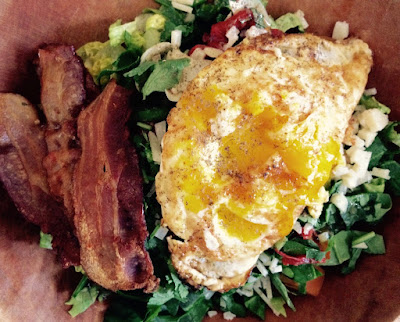I am fortunate to own a 1993 first edition of the book, which came out before Donna had a bunch of products to sell (not that there's anything wrong with that), but I appreciate how in my copy, her diet and principles are outlined in a very pure form.
The Body Ecology Diet (or BED) grew out of Donna Gates' extensive research and experience. It incorporates elements of Ayurvedic medicine, macrobiotics and natural hygiene with the goal of providing a real food, plant-based, nutritional method for eradicating Candida overgrowth and rebalancing the gut microbiome. Many BED principles can be applied or adapted to SIBO, and the current, up-to-date Body Ecology website, unlike my vintage paperback, addresses IBS and SIBO specifically.
One of the seven main principles in the BED is "The 80/20 rule". This is applied to three distinct categories:
1) In terms of maintaining proper pH balance, the 80/20 rule is to eat 80% alkaline foods and 20% acidifying foods.
2) In terms of eating proper volume, the 80/20 rule is to fill your stomach only until it is about 80% full, and leave 20% empty space. This tip can help improve digestion and sleep quality in all people. Traditional Japanese culture has a phrase for this: Hara hachi bu
3) In terms of menu planning, the 80/20 rule is to eat 80% vegetables (land and ocean source) at every meal, and 20% of proteins or BED starches (root vegetables other than sweet potatoes and potatoes*, or the 4 seedlike grains - amaranth, quinoa, millet and buckwheat). *As an exception to the no potato rule, red potatoes in their jackets are allowed.
Because animal protein is non-fermentable, it's one of the safest foods to eat on the SIBO diet, but relying too heavily on eggs, aged cheese, fish, chicken and meat at the expense of veggies can lead to gut heaviness, mineral deficiencies and other imbalances.
Not eating enough fresh veggies is especially a problem in winter when salads can lose their appeal. However, I feel best when I base my diet on vegetables and use animal food as an addition to, not instead of plant food. I am grateful for being reminded of the 80/20 rule by rereading The Body Ecology Diet.
Here's how I put the 80/20 rule in action for my tasty lunch today:
What you are looking at up there: A big pile of room temperature greens (chopped romaine, spinach and cilantro) under one, over easy organic egg. Diced orange heirloom tomato also in hiding. Two slices of sugar free, Paleo-approved bacon and a couple black olives. Bragg's Healthy Vinaigrette with a little extra balsamic vinegar.
If I think of it, I'll add more 80/20 meal pictures to this post in the future, to give you more ideas on how to apply this principle to your SIBO safe diet.
March 2019 Photos Update: Examples of what 80/20 looks like on the plate. Body Ecology principles suggest it's helpful to eat your animal protein meal at lunchtime, when digestive fire is strongest, and to have a starch-based, vegetarian meal at dinner time. As always, see what works best for you.
 |
| 80% Veg (Braised Mixed Veg + cultured carrots + avocado); 20% Starch (soaked and boiled Millet) |
 |
| 80% Veg (Zucchini Noodles with Red Peppers and Tomato Sauce); 20% Protein (Grass Fed Ground Beef) |
 |
| Snack: Turkey Breast Roll-Up in Nori Seaweed, with Cultured Veg and Avocado filling |
 |
| 80% Vegetables (cabbage, parsley, Coastal Blend, braised in broth); 20% Protein (pastured hard boiled eggs) |
 |
| 80% Veggies (spinach salad, steamed broccoli & carrots); 20% Protein (baked tempeh + pumpkin seed sprinkle) |
 |
| 80% Veg (Sauteed Greens + soaked Hijiki Seaweed + Cultured Carrots); 20% Starch (Millet and Carrots) |


